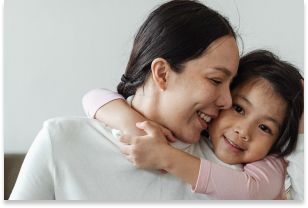Wouldn’t it be nice if, along with grades for English, Science, and Algebra this year, our child’s report card included quarterly feedback on their mental health?
Recently, actor Tom Holland of Spider-Man fame reported on his mental health publicly by deleting several of his social media accounts. The actor stated that his social media accounts had become “detrimental” to his mental state and that he “spirals” when he reads things about himself online. He used words like “overstimulating” and “overwhelming.”
And parents were likely “overjoyed” giving cyber high fives all around with Holland’s transparency in talking so publicly about social media’s link to mental health. Because if you are a parent you know.
As we head into a new school year with high hopes in tow, Holland’s decision also challenges us to pay closer attention to how social media could potentially impact our kids’ mental health.
A few questions for families to consider:
- Have we (really) talked about the mental health risks connected to social media (cyberbullying, body image issues, digital drama, tech addiction, fake news, and FOMO)?
- What social media safety topics do we need to refresh (based on age)?
- Have we put the right digital safeguards in place to minimize mental health risks?
- How much time online is appropriate for my child’s age and maturity level?
- Are my child’s mood changes age-appropriate, or is it something more?
- Has my child’s appearance, attitude, health, or grades changed?
- Does my child feel supported and know where to turn for help? (Am I sure of that, or am I making assumptions?)
Every child’s maturity and cognitive ability to handle online challenges will differ, so a one-size-fits-all digital wellbeing plan isn’t likely to work. Here are a few insights and tips that may be helpful as you shape the method that works for your family.
Explore healthy social media limits.
- Explore time limits. Research continues to find that reducing social media use directly reduces loneliness, depression, and anxiety. Most every child needs help with balance, especially at the start of a new school year when a new routine is in play. Pay attention to your child’s social media use and consider establishing time limits if needed. Be sure to include your child in the conversation. Ask them to define what a healthy digital balance means to them and how to tie (or untie) behaviors to those goals
- Pay attention to friend groups. As a parent, you’ve got a million things to pay attention to, but few things are more important than the people your child consistently spends time with on and offline. This circle of influence is powerful and can change online constantly.
- Make your parent-child relationship a priority. Not all signs of emotional distress will be visible; some will be subtle or intentionally hidden by your child. That’s why it’s so important to take the time to connect, listen, and truly understand how your child is doing.
- Practice digital health. Digital, mental, and physical health are intertwined. Show your child what balanced and healthy digital habits look like. These include online health in conflict management, wise posting and commenting, and time limits. Offline, this includes modeling healthy physical habits such as exercising, meditation, and deep breathing, building healthy face-to-face relationships, and getting enough sleep.
- Know the signs. Consider looking more closely into how your child’s online activities might impact them emotionally. Be aware of shifts in behavior, grades, and sleeping patterns. Know the signs that they may be experiencing online bullying.
- Layer Up Your Power. Consider technology your parenting partner to help reduce the mental health risks your child may encounter online. Parental controls on family devices can help you monitor their wellbeing and set time limits.
- Proceed with care. If you know your child is having challenges online, it’s important not to overreact and restrict device use altogether. Kids need peer connection, and online is where they tend to connect the most (like it or not, agree or not). Consider ways to help them balance their time online. Discuss the pros and cons of their favorite apps before making drastic changes.
- Ask for help. Talk with your kids daily, and if you believe they need additional help beyond your scope of knowledge, be prepared to find resources to help. If you or a family member is in immediate crisis, visit the emergency room or call National Suicide Prevention Lifeline at (800) 273-8255.
Any way you slice it, many unknowns come with every new school year, especially if you have tweens or teens. Social media adds a layer of complexity to those unknowns. However, with some forethought and follow-through, you can navigate those risks one day at a time.

